In the course of the project, we have produced 5 publications, which are distributed to the residents of Mikolow and people who are familiar with blue-green change.



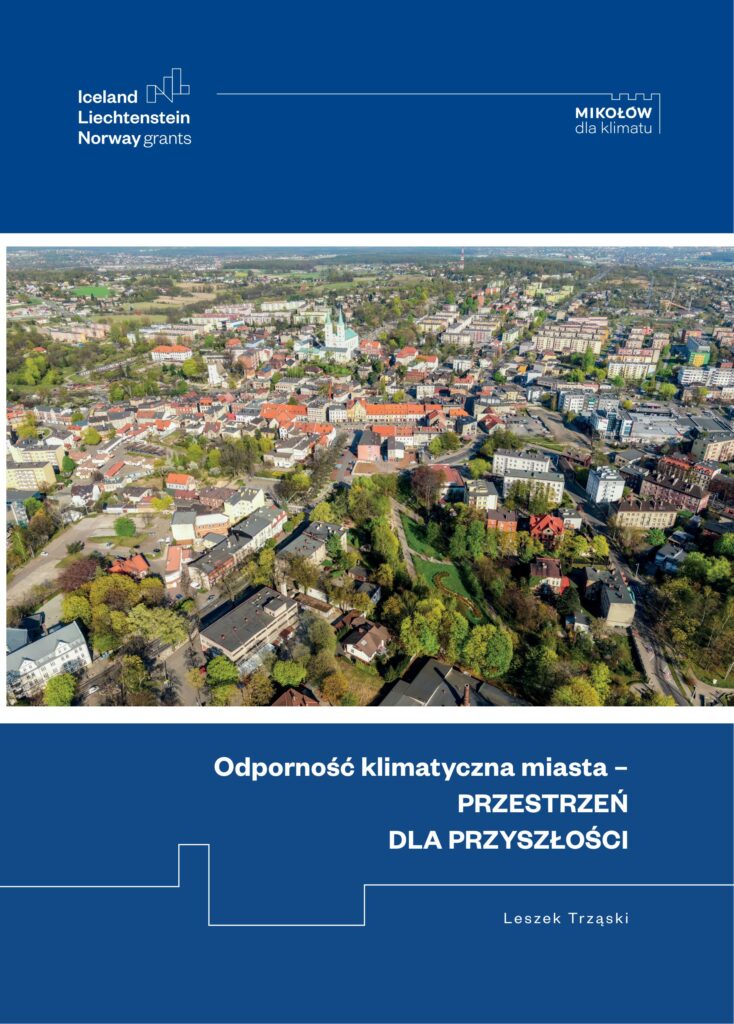
In the course of the project, we have produced 5 publications, which are distributed to the residents of Mikolow and people who are familiar with blue-green change.




In the course of the project, we have produced 5 publications, which are distributed to the residents of Mikolow and people who are familiar with blue-green change.




A pedestrian and cycle path connected the two villages of Mokre and Bujaków. Trees, shrubs and grasses and perennials were planted along the entire, approximately 3.5 km long path. Three parking spaces with a bench were also installed. A number of nature-based solutions have been used for water retention and rainwater management: an infiltration ditch, basins and wetlands.

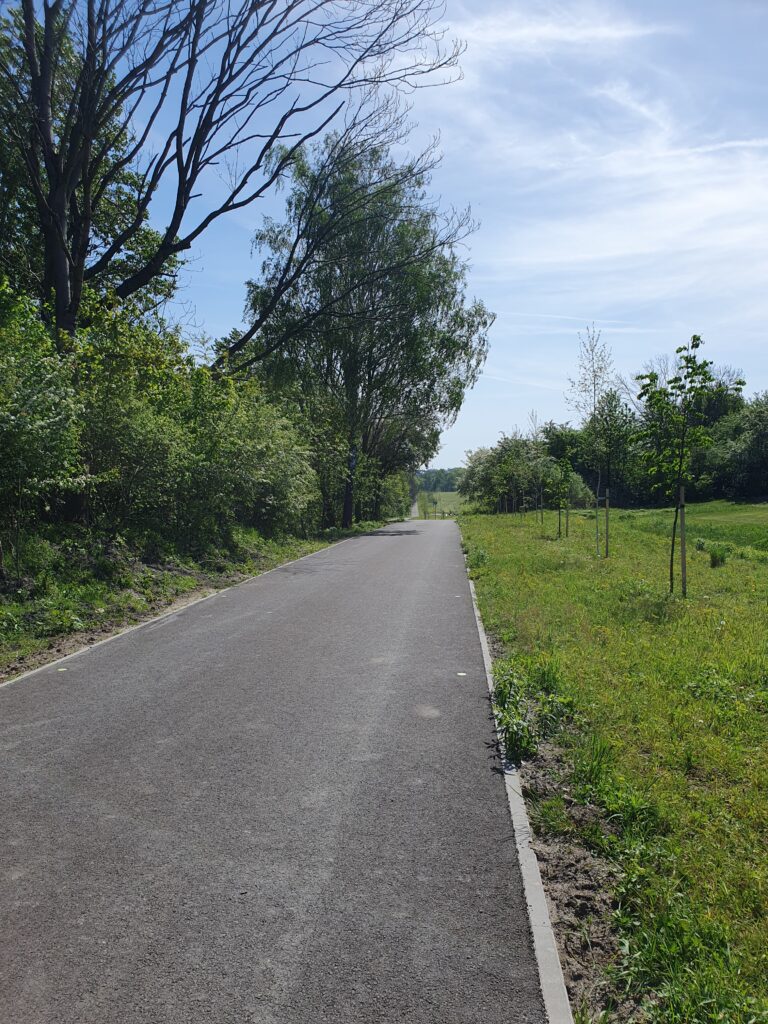

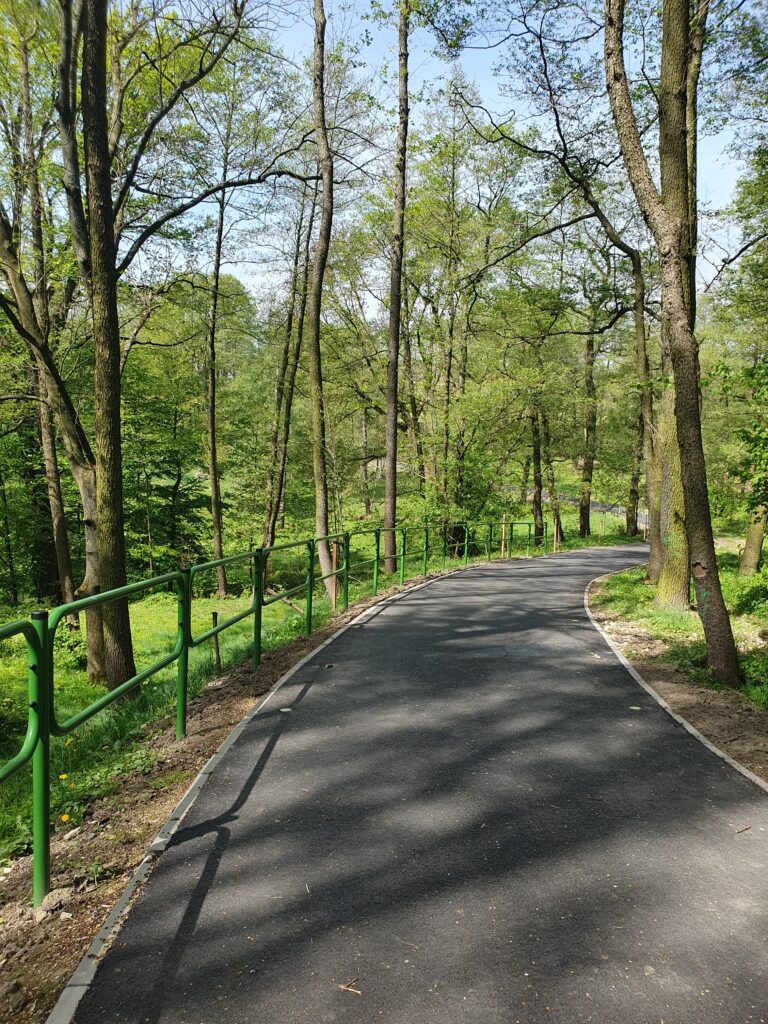
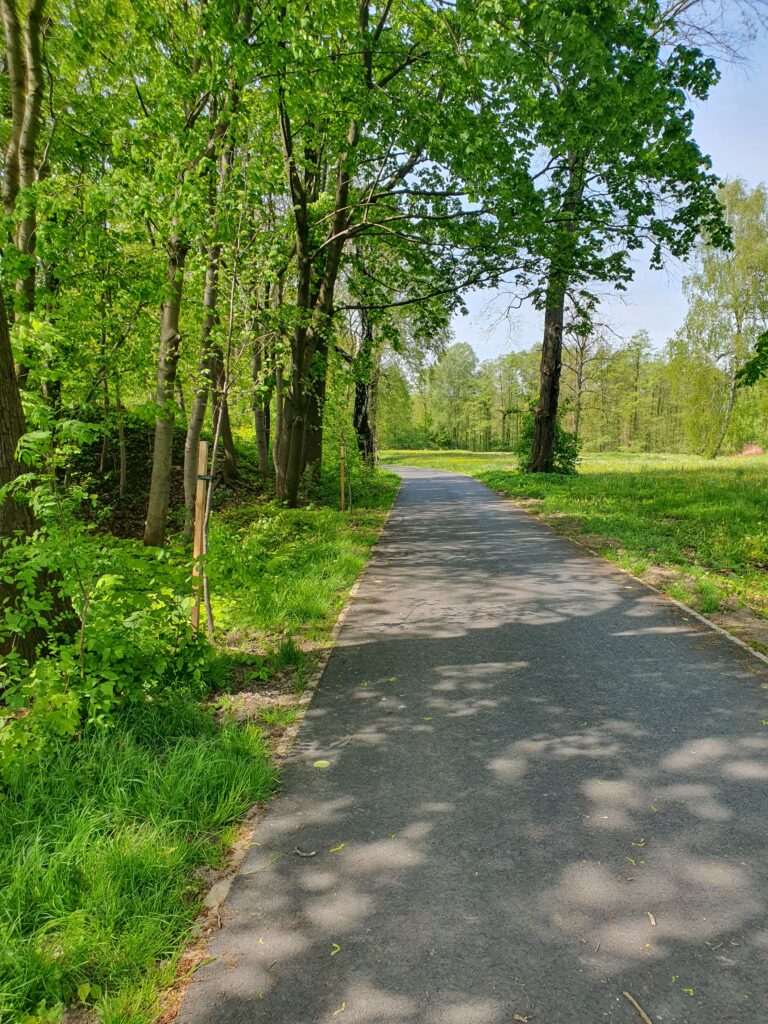
A wooden educational hall was erected on the grounds of the Silesian Botanical Garden. This impressive structure consists of two levels: on the lower level there is an outdoor educational room that can accommodate up to 80 people, and on the upper level there is a didactic path – a green roof with planted native vegetation. The plants are described and exemplify intensive and extensive plantings. Excess rainwater has been directed into the ground and into an underground reservoir, which will be used locally. The path can be accessed from both sides, with steps on one side and a ramp on the other, and is protected by railings. The main purpose of the green field education room is to educate about climate change and adaptation options. Here, the local community will have the opportunity to gain knowledge about the impact of climate change on our environment and to discover a variety of solutions that can help to adapt to these changes. It will also be a great opportunity to promote sustainable lifestyles and encourage green actions. Both sections will soon be available to visitors to the Garden.
Construction work took several months and included:
removal of existing reinforced concrete elements,
construction of an underground concrete rainwater storage tank,
excavation of the foundation footing for the wooden columns of the shelter structure,
construction of wooden structure of the shelter,
execution of waterproofing,
construction of a green roof: educational plots as examples of intensive and extensive green roofs with diverse vegetation,
installation of a water reuse system for possible irrigation of vegetation on the roof,
the creation of an embankment as a natural approach to the upper part of the hall,
drainage of the hall and discharge of water into an underground tank with emergency overflow to the ground,
paving of the surface with cobblestones,
construction of two technical rooms in the lower part of the construction,
protection of the structure against corrosion,
construction of small architectural elements in the area of the hall: educational boards, benches, tables and waste baskets,
planting of plants adapted to the flat roof construction,
providing electricity to the gazebo and the technical rooms,
water supply to the gazebo.

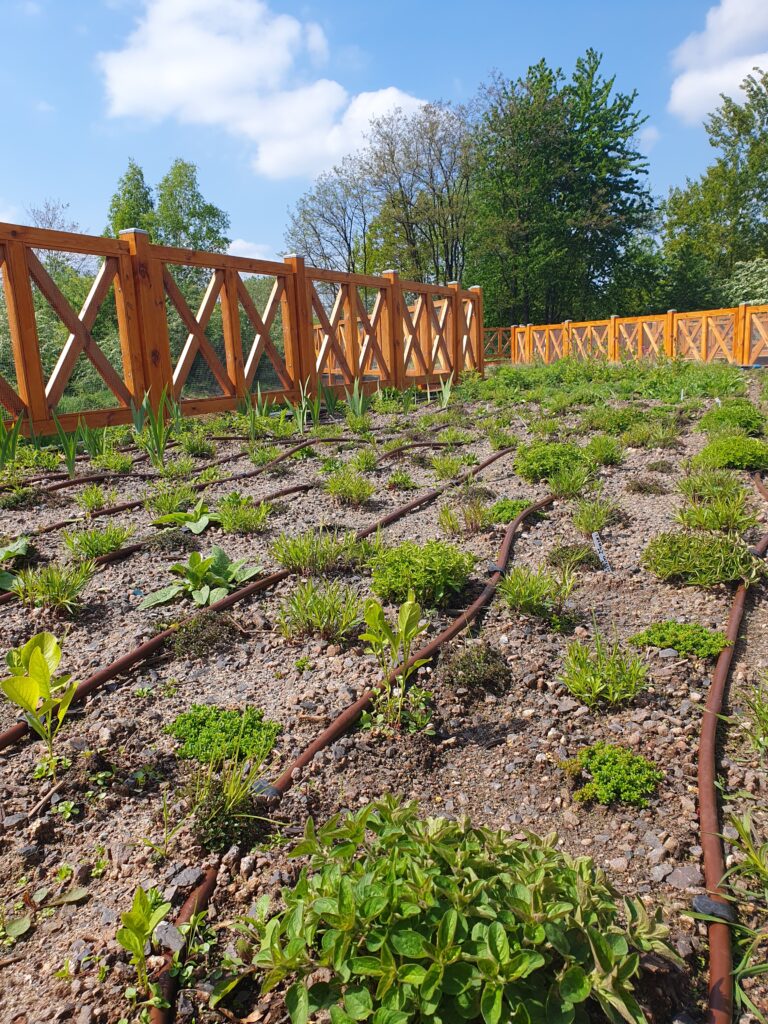
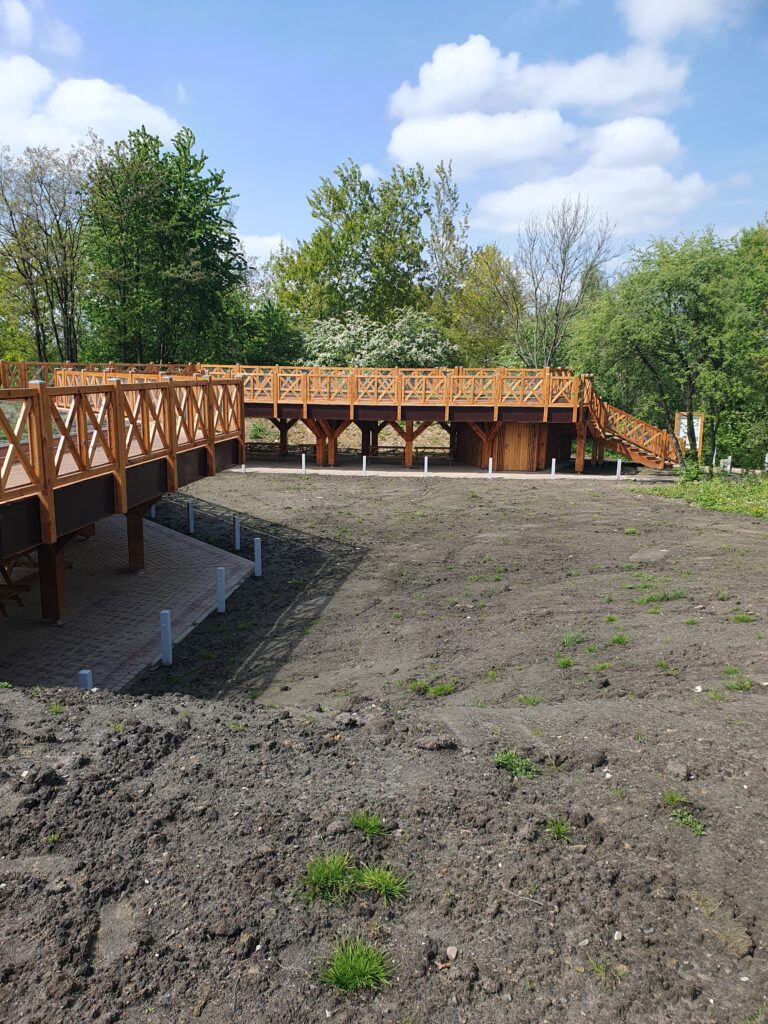

This multi-faceted investment took several months to complete. Its effects are not visually spectacular, while its value for nature is invaluable. The creation of a rainwater bioretention system at the Silesian Botanical Garden is aimed at slowing down the flow of rainwater by redirecting and distributing it to areas that are elements of the bioretention system (including astatic reservoirs, rain gardens, wetlands) and then collecting excess water in underground reservoirs. The work was divided between three gardens: Yellow Garden on Pine Street, Red Garden on December Street and Green Garden on Golf Street.
Yellow garden
1 An installation for direct rainwater management was designed and constructed:
rain garden with sealed bottom and overflow to underground tank,
a rain garden with an unsealed bottom preceded by an underground tank.
3 The hydrophytic pond located at the foot of Pine Mountain was renovated.
4 Two underground concrete tanks were installed.
Red Garden
An astatic reservoir in the form of a retention and infiltration basin was designed and constructed.
Green garden
The moral function of the meadow was restored by designing and constructing low damming
water on an approximately 50m section of drainage ditch.

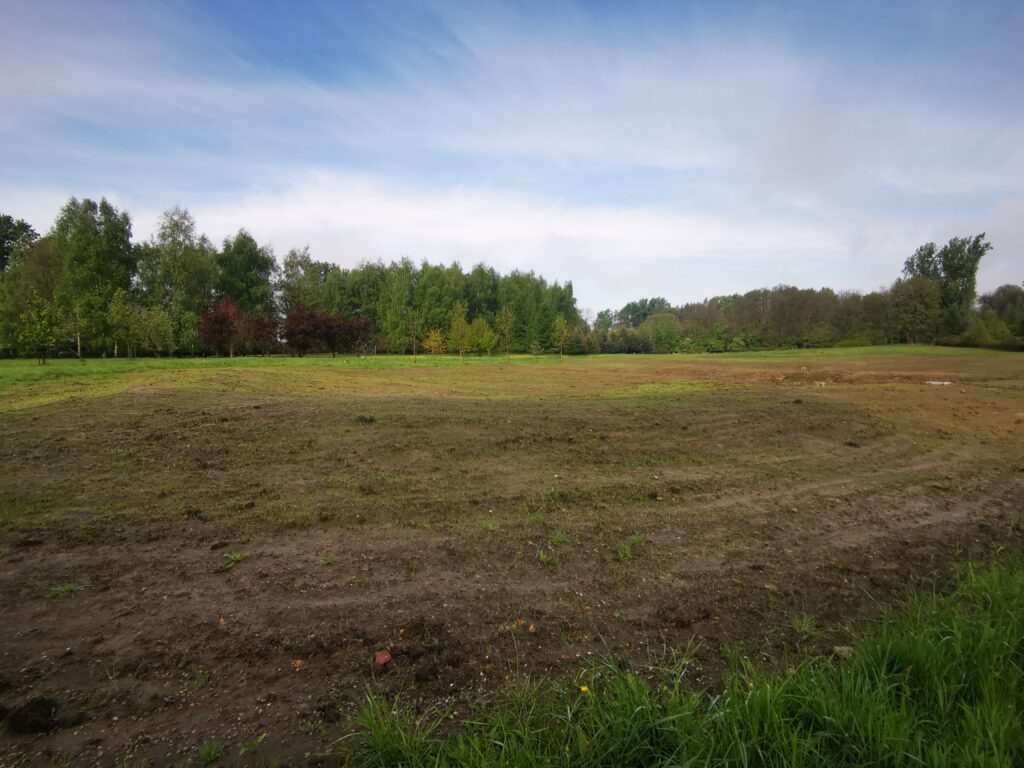
Two openwork pergolas have been erected on the grounds of the Silesian Botanical Garden, near the playground. Each is 10 metres long and 2.5 metres high. The pergolas were designed to provide shelter from the sun on hot days thanks to the plants planted. When the glycines are planted, they will be an additional visual attraction for visitors to the Garden.
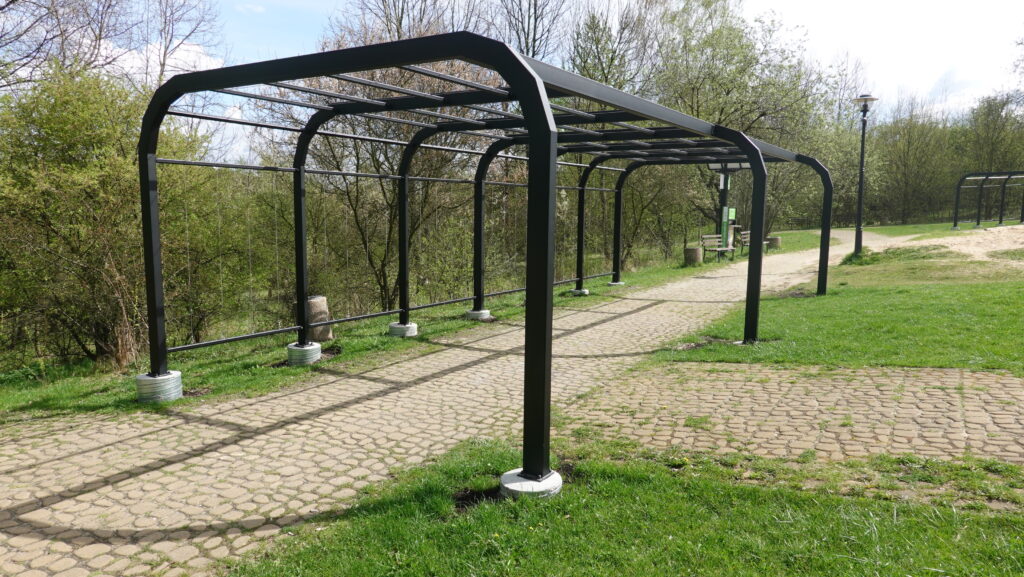
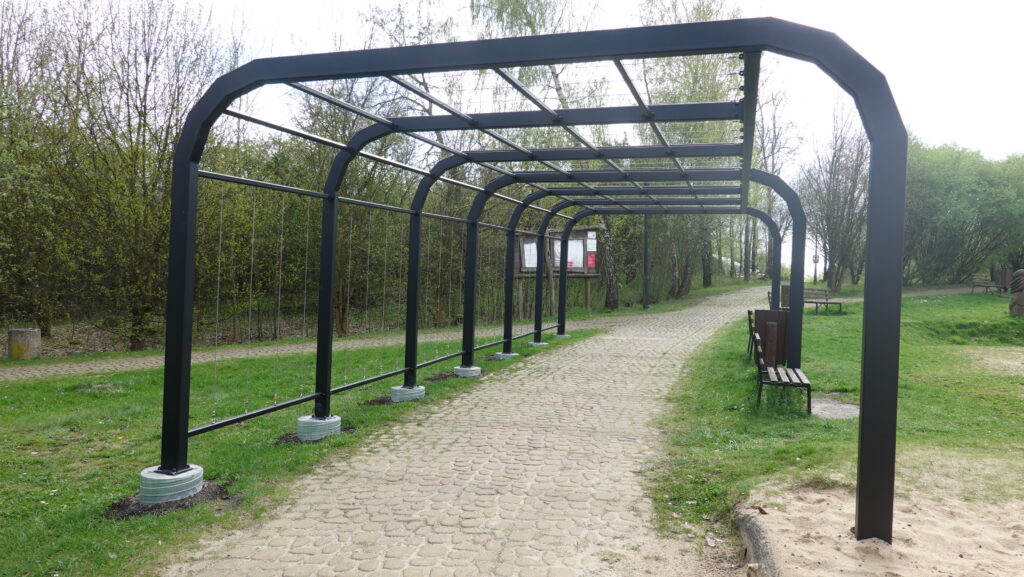
Passengers waiting for buses can now use five new bus shelters, called “Green Bus Stops” for good reason.
What distinguishes the new shelters?
They were designed to retain rainwater and cool the air. A functional solution dedicated to lightweight green roofs was used. Sedum mats made on system solutions for light green roofs with moss for rapid greening of the roof and protection against wind erosion were laid as the vegetation layer on the shelter. Sedum mats are resistant to extreme weather conditions and the adverse effects of the urban environment and are capable of temporarily retaining rainwater.
The green roof consists of layers in sequence:
Behind the back wall of the shelter, a system of trellises has been installed as a support for climbing plants, which – once the vegetation has grown – will form a ‘green wall’.
Also behind the rear wall of the shed is a bed, which is part of the water retention system. Thanks to appropriately selected infiltration layers, it makes it possible to receive rainwater from the green roof, which is drained through drainage pipes placed in the posts of the shed, to irrigate the root system of the green plant wall and the remaining plants in the flower bed, and to drain excess water into the ground.
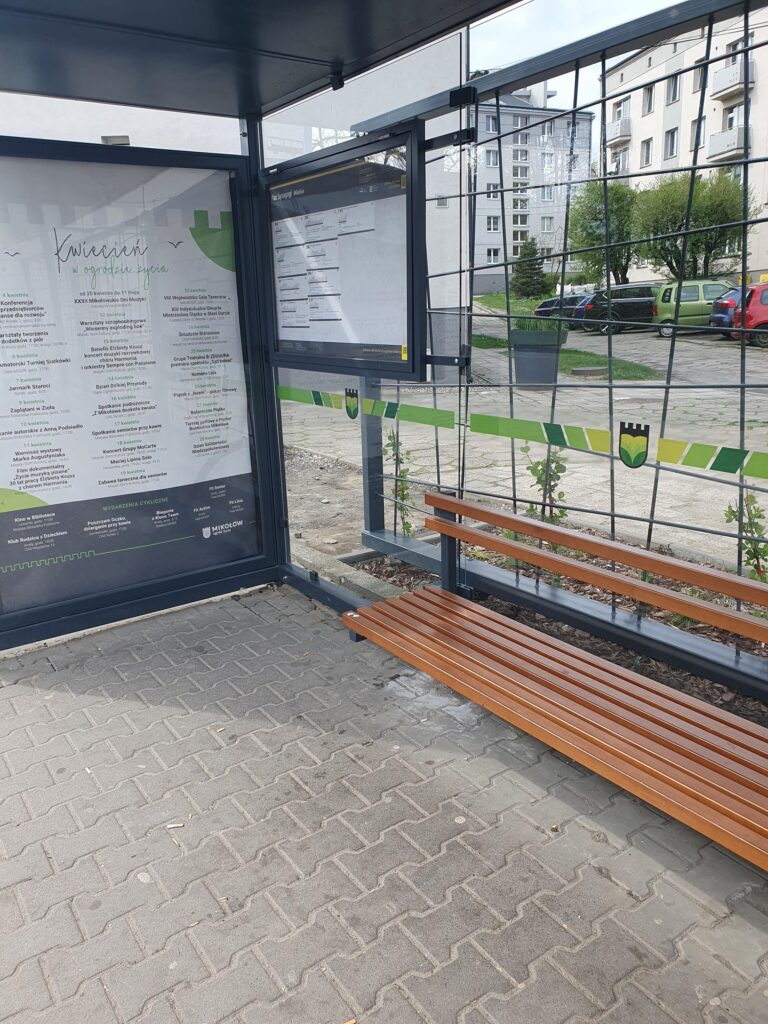

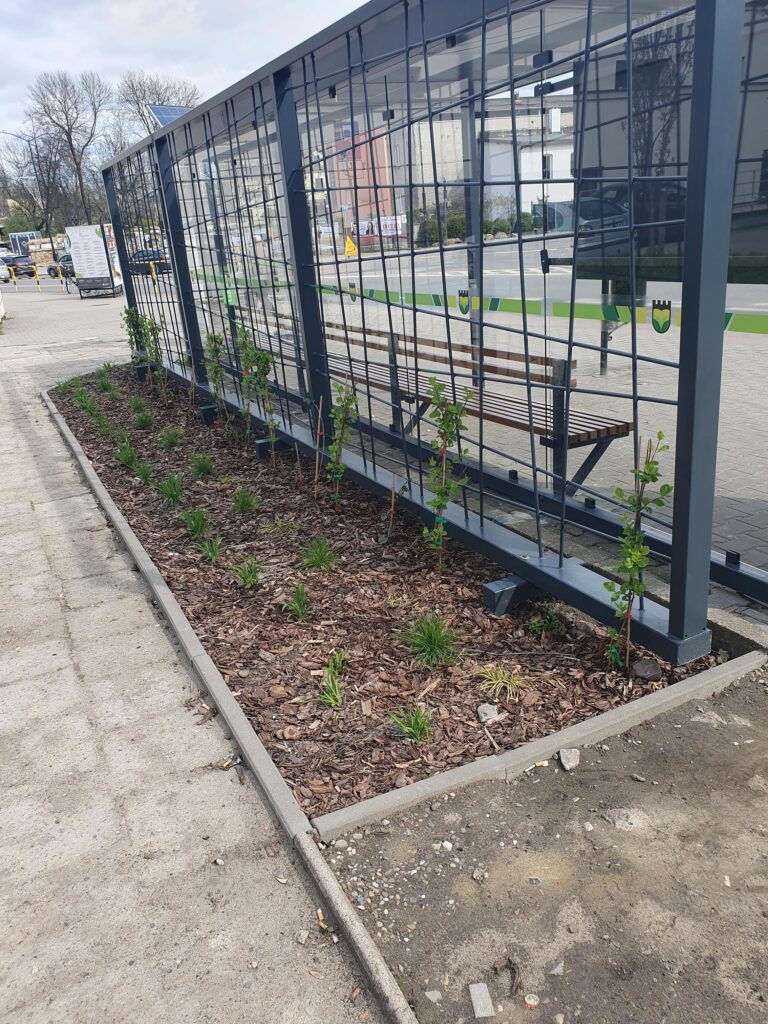

A public car park for cars and coaches has been redeveloped at the Silesian Botanic Garden. This is no ordinary car park, as not only utility or aesthetic qualities were taken into account in its design, but also rainwater retention. The surface of the car park is made of paving blocks (laid with spacers to allow water to run off) and openwork panels between which grass will be sown. Bioretention system elements such as:
Infiltration (absorption) trenches – sunken retention areas designed to retain water and slow down runoff, allowing rainwater to infiltrate;
Absorption basins – vegetated areas of lowered ground where water is temporarily collected, treated and then infiltrated into the ground;
Absorption troughs – linear, wide and shallow open channels vegetated with low vegetation that intercept and transport rainwater;
Local depressions – with drainage applied and vegetated to withstand constant or frequent flooding with water;
Vegetated lanes – areas densely planted with water-loving vegetation with a shaped bottom;
Root boxes – protecting the car park area with tree planting.
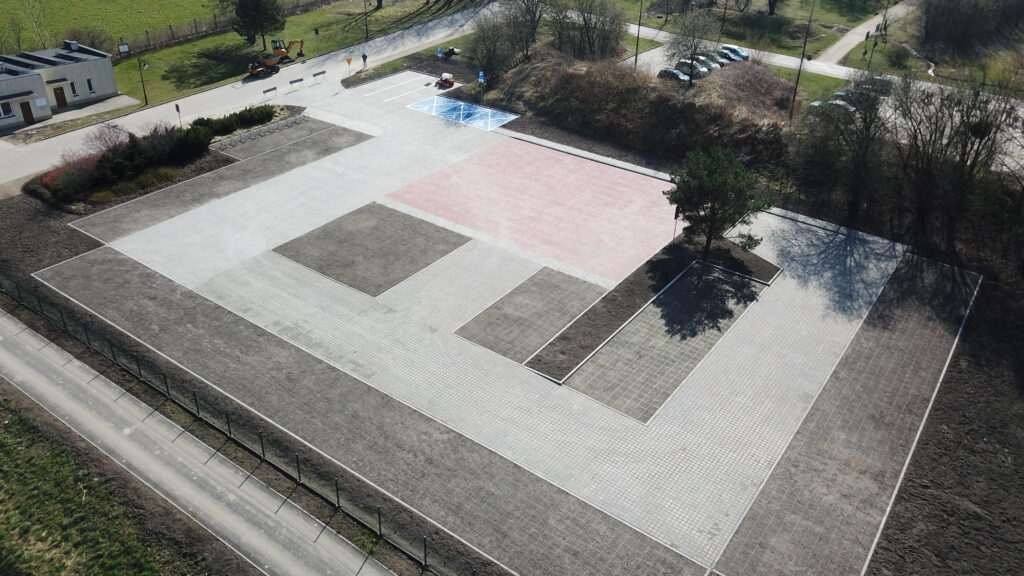

Rain gardens help greatly with water retention. Such a garden not only catches rainwater that enters it directly during rainfall, but also that flowing over impermeable surfaces: roofs, pavements, streets, etc. This ensures that it is retained by the plants and is gradually returned to the atmosphere.
The gardens can be established in containers or, like the one on Krawczyka Street in Mikołów, in the ground.
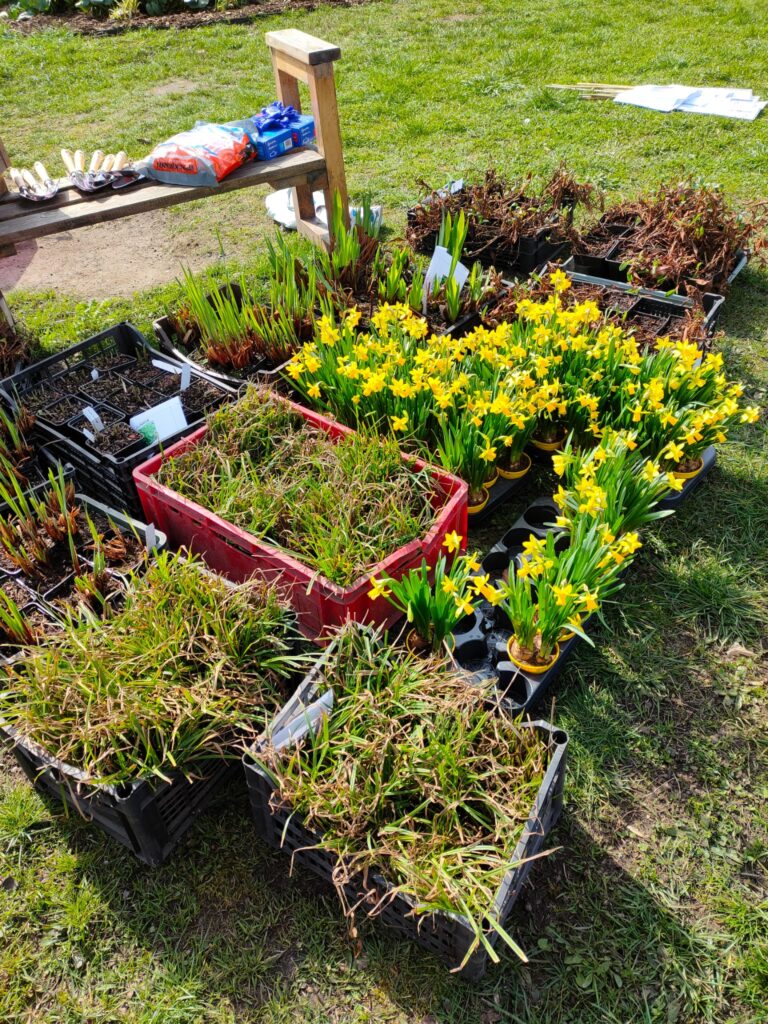
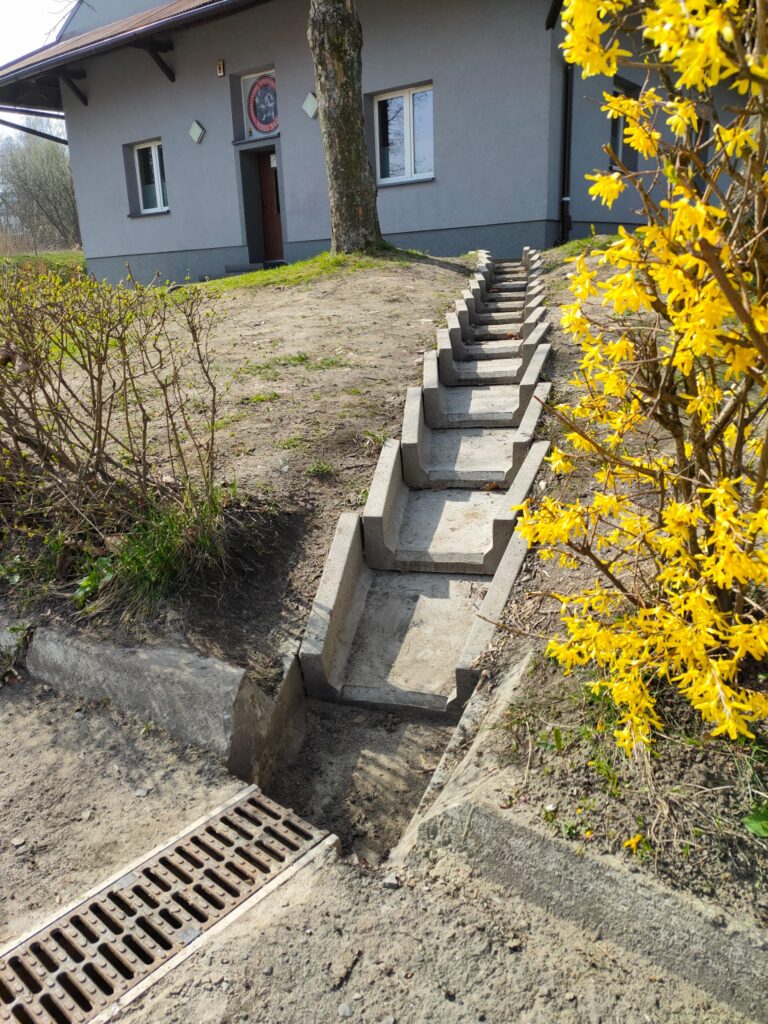
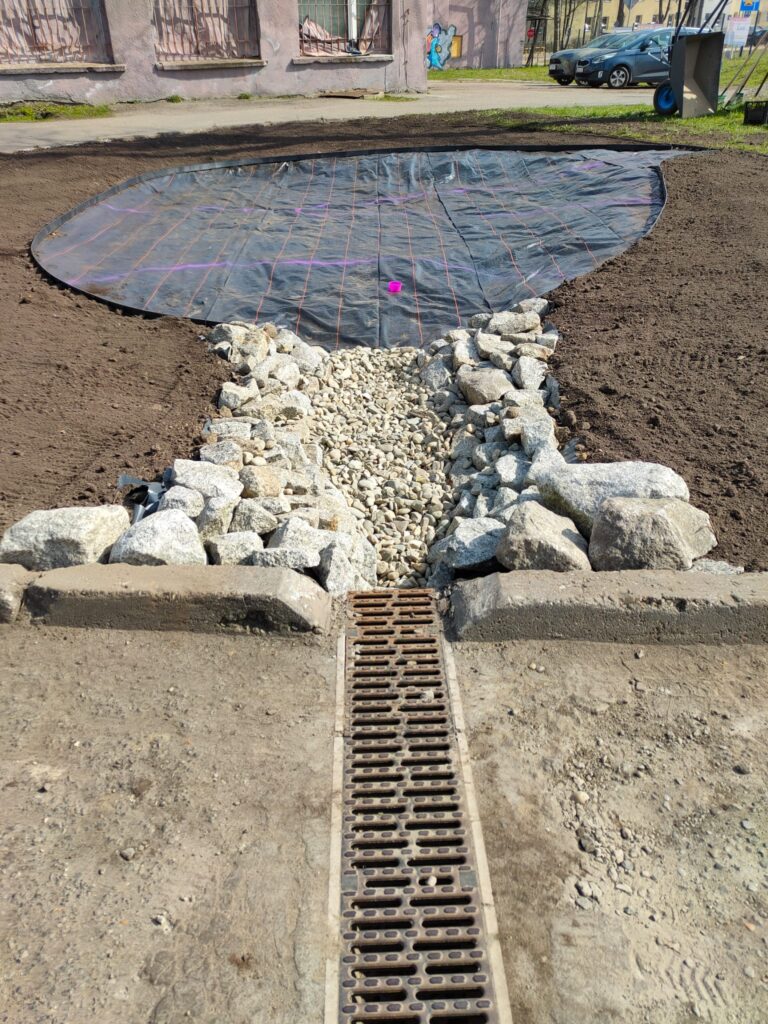

On the closing conference of the project “Mikolow for the climate – implementation of blue-green infrastructure in the city”
Ladies and Gentlemen,
it is with great pleasure that we would like to invite you to participate in the conference summarising the “Mikolow for Climate” project, which will be held on 10-12 April 2024. The conference will be a unique opportunity to learn about the achievements and conclusions of the project, as well as to discuss the future of sustainable development and environmental protection in our region.
Day 1 – Summary of the “Mikolow for Climate” project.
Date: 10 April 2024
Time: 10.30 am – 4.00 pm
Place: Public Library, 5 Karola Miarki St., 43-190 Mikołów
The programme of the first day of the conference includes panel sessions summarising the implementation of the project.
Day 2 – Popular Science Conference on Blue-Green Infrastructure Solutions.
Date: 11 April 2024
Time: 09.00-16.00
Venue: Centre for Social Activity, 2 Rynek Street, 43-190 Mikołów
The second day will include panel sessions on Blue-Green Infrastructure and a field trip to see the investments made by the project.
Day 3 – Training: Selected substantive and formal-legal issues concerning dendroflora inventories.
Date: 12 April 2024
Time: 09.00-16.00
Place: Silesian Botanical Garden in Mikołów, 5 Sosnowa St., 43-190 Mikołów
The last day of the conference will be devoted to a training course on tree and shrub inventories, including a lecture part and practical work in the field.
All those interested in the climate adaptation of cities are invited to participate in this comprehensive event.
Applications, until 2 April 2024, can be sent via the form.
Places are limited – participation in the conference is determined on a first-come, first-served basis.
Planting and maintenance of trees: MARKET PLAINS17 small-leaved lime trees have appeared in the market square in Mikolov, and there are also new flowerbeds planted with roses and arborvitae.
The work involved several aspects:
1) Demolition and excavation – removal of almost 400m2 of concrete and granite paving.
2) Creation of planting beds – 4 2.5m wide planting beds with borders increase the cleared area around the trees.
3) Establishment of an anti-compression system – this is a dedicated system for trees planted in small spaces, together with reinforcement, aeration and irrigation installation and modules to direct root growth.
4) Application of a suitable substrate.
5) Installation of 6 decorative trusses.
6) Restoration of the pavement using pavers previously pulled down.
The small-leaved lime ‘Greenspire’ is a medium-sized but fast-growing tree with a regular, wide-oval crown with a prominent, straight guide. The tree grows to 15-20 metres high and 10-12 metres wide. The heart-shaped leaves are 6 to 10 cm long, dark green, glossy and turn yellow in autumn. In late June and early July, the trees are covered with yellow-green, fragrant and honey-giving flowers. The flowers hang on a flaccid peduncle fused to a tongue-shaped inflorescence leaf. The fruits are small pecans usually containing a single seed. It is a native variety, fully frost hardy and tolerant in terms of adapting to harsh urban conditions.
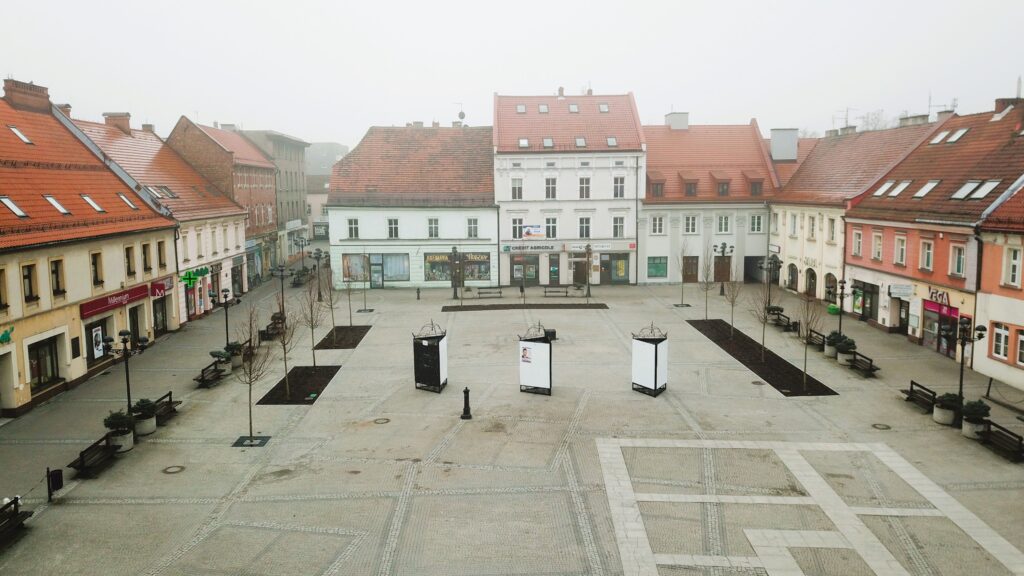
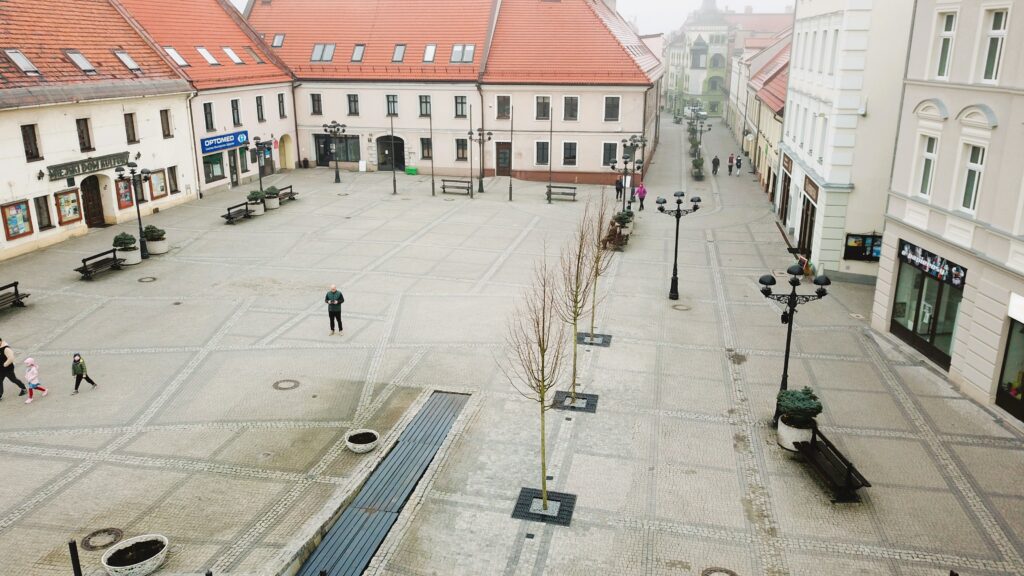
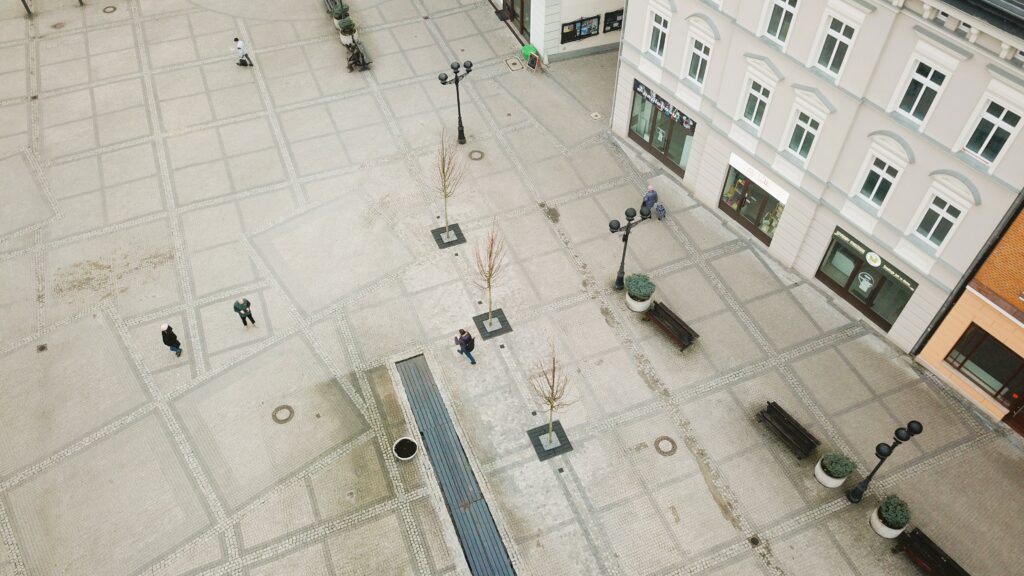
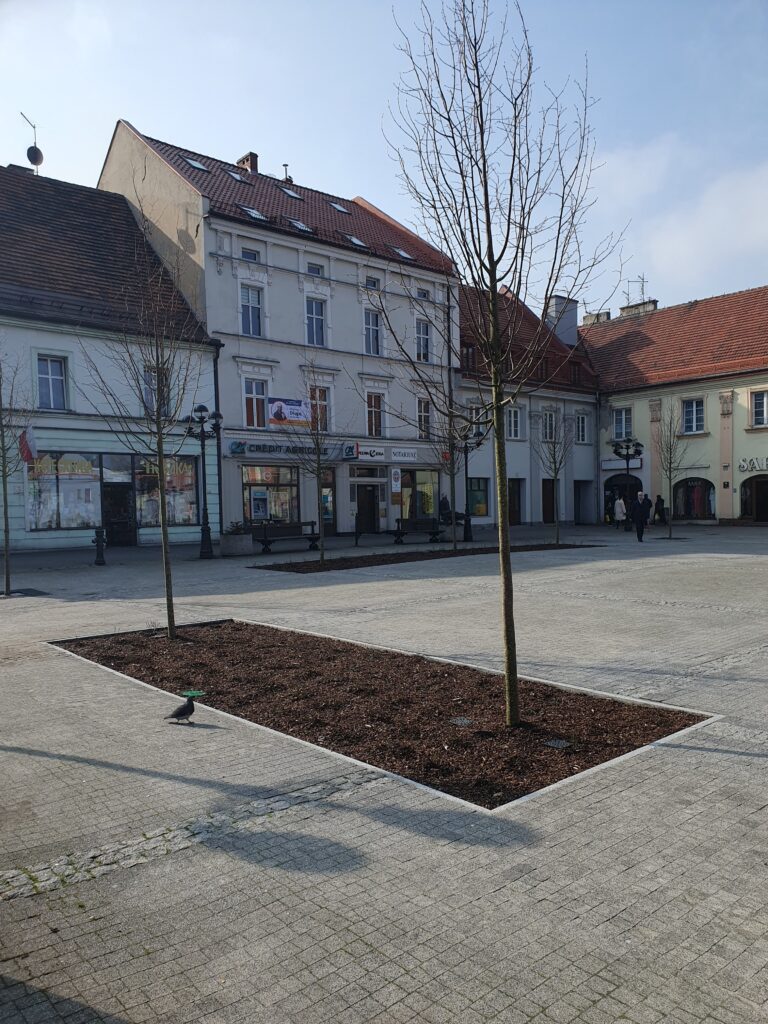



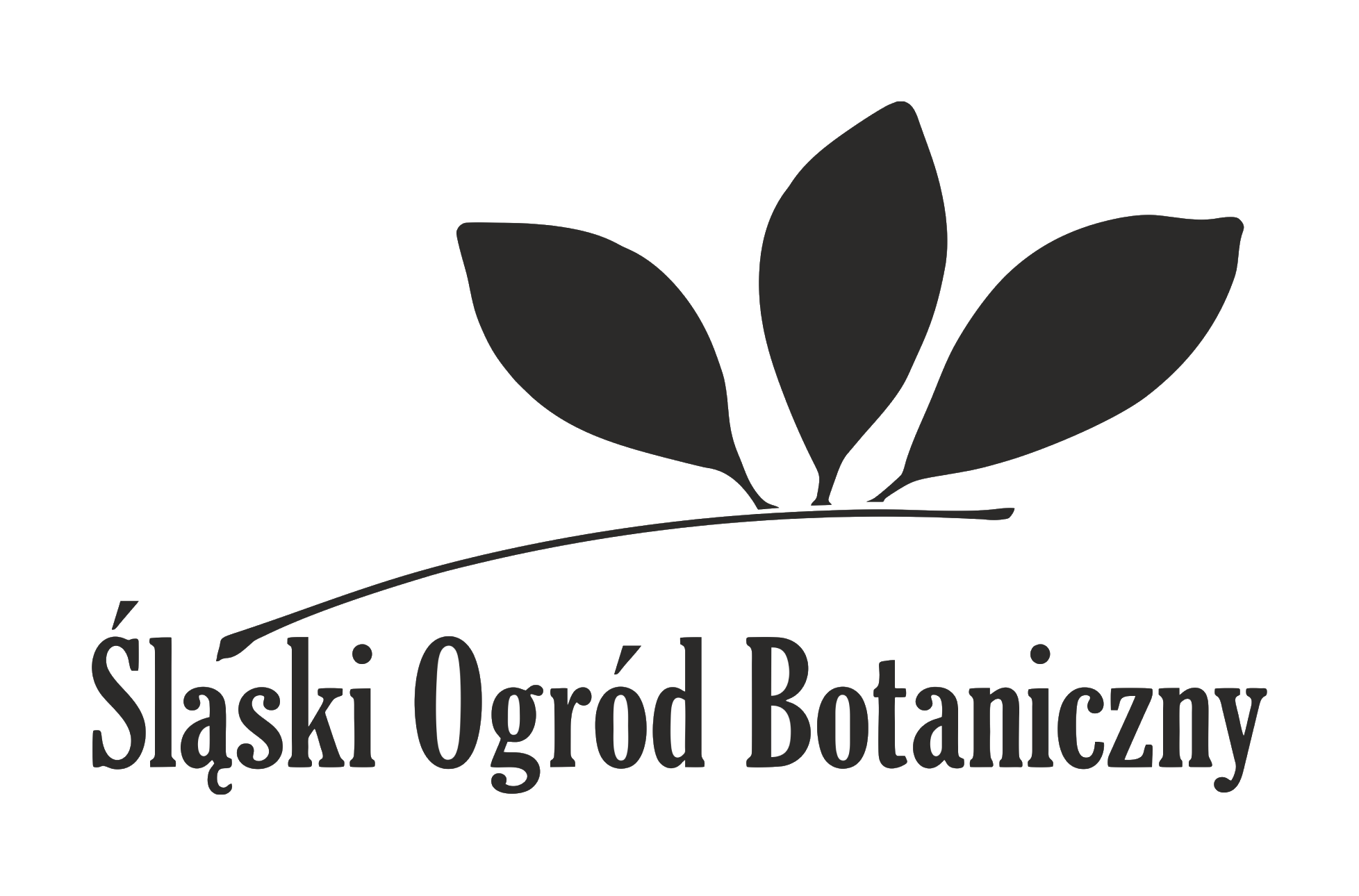
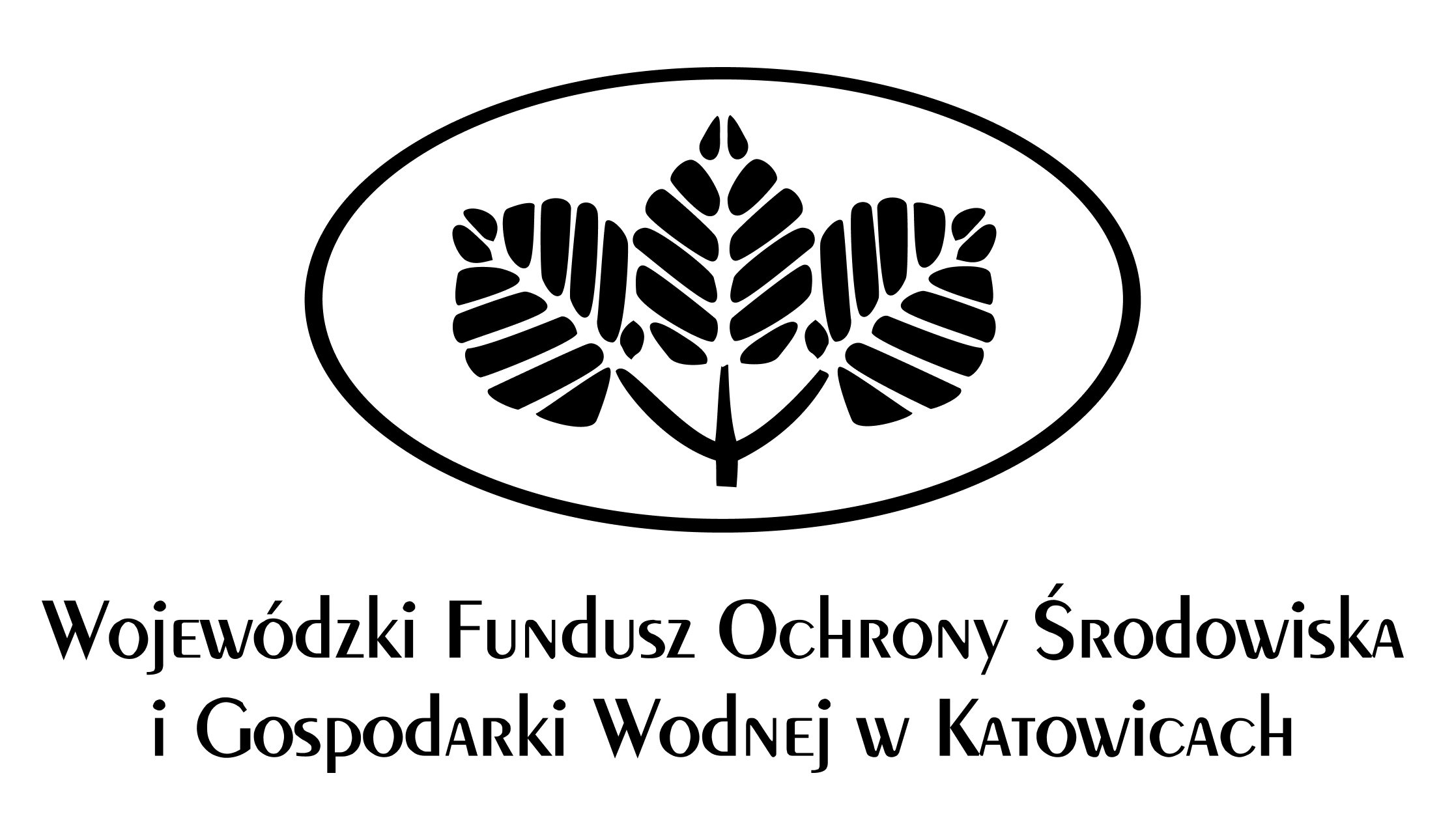


Projekt finansowany jest z środków MF EOG na lata 2014-2021. Dofinansowany z środków WFOŚiGW w Katowicach.